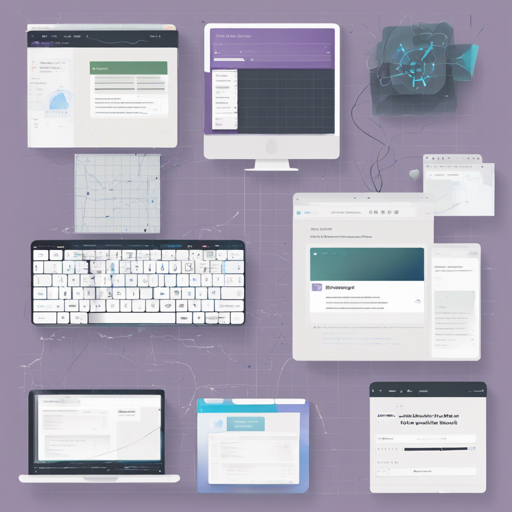Welcome to a seamless world of combining Tailwind CSS with Bootstrap’s powerful flexbox grid system! By the end of this tutorial, you’ll be able to efficiently install and configure the Tailwind Bootstrap Grid plugin, giving your layouts both responsiveness and flexibility. Let’s dive in!
Overview of Tailwind Bootstrap Grid
Tailwind Bootstrap Grid is an innovative plugin that merges Bootstrap v5’s grid capabilities with Tailwind CSS’s utility-first framework. It allows developers to craft responsive layouts with ease. Consider it like a dynamic duo in the world of web design—one brings the classic grid structure while the other adds flair and modernity!
Installation Steps
Follow these simple steps to get started with the Tailwind Bootstrap Grid:
- Step 1: Install the plugin via npm by running the following command in your terminal:
npm i -D tailwind-bootstrap-gridtailwind.js file, add the following:module.exports = {
plugins: [
require('tailwind-bootstrap-grid')({
containerMaxWidths: {
sm: '540px',
md: '720px',
lg: '960px',
xl: '1140px',
},
}),
],
};@tailwind base;
@tailwind components;
@tailwind utilities;Now, you’ve successfully set the stage for a Bootstrap v5 flexbox grid!
Understanding the Code with an Analogy
Imagine you are building a grand theater. The min-max container widths represent the framework of the building, defining how wide the walls can be at different stages of growth (small, medium, large, and extra-large). The use of plugins serves as the architect, bringing together all necessary components with specific measurements to ensure a perfectly organized space for your audience.
Features at a Glance
- Tailwind CSS options support
- Custom screens, separator, prefix, and important attributes
- RTL support for right-to-left layouts
Options
Here’s a condensed guide to further customize your grid:
- gridColumns: Set the number of columns (default is 12).
- gridGutterWidth: Control the gutter width between columns (default is 1.5rem).
- generateContainer: Choose whether to generate .container and .container-fluid classes (default is true).
Troubleshooting Common Issues
If you encounter any issues while implementing the Tailwind Bootstrap Grid, here are some troubleshooting tips:
- Why doesn’t my .container have padding? Ensure that the core container plugin is disabled, as both plugins redefine the .container class.
- How can I use RTL CSS? Set the direction using the
dirattribute on your root HTML element to ltr or rtl. - For Bootstrap v4 integration: You can utilize postcss-bootstrap-4-grid.
For more insights, updates, or to collaborate on AI development projects, stay connected with fxis.ai.
Conclusion
Integrating Tailwind Bootstrap Grid into your project opens up countless possibilities for creating beautiful and functional layouts. By following the steps outlined above, you can harness the power of both frameworks, ensuring a responsive design that meets modern web standards.
At fxis.ai, we believe that such advancements are crucial for the future of AI, as they enable more comprehensive and effective solutions. Our team is continually exploring new methodologies to push the envelope in artificial intelligence, ensuring that our clients benefit from the latest technological innovations.

